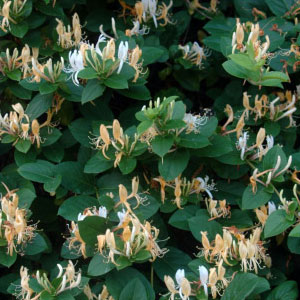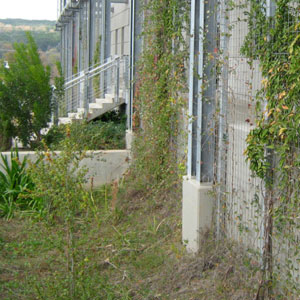
Cabbage leaf covered with pesky caterpillars. Image credit: Shutterstock/azure
Use Integrated Pest Management
Integrated pest management, or IPM, is another commonsense approach to pest control that includes many of the techniques used by organic gardeners but does not rule out the use of synthetic pesticides as a last resort. Although it was developed initially to help commercial farmers avoid spraying on a regular schedule whether it was necessary or not, it has been adapted for home gardeners and can be effectively employed with or without the use of synthetic pesticides.
IPM is a systematic process involving prevention, monitoring and choosing the least toxic pest control when action is necessary. One of its fundamental principles is that not all insects and weeds require control. Many are innocuous, and some are even beneficial. Another is the recognition that when it’s advisable to intervene, the goal is pest control, not eradication.
Monitoring your plants as often as possible throughout the growing season is the cornerstone of IPM. When you do encounter a pest problem, you need to learn about the extent of the damage it can cause and what will happen to the plant with or without treatment. Seeing a single pest doesn’t mean that action must be taken — you should continue to keep a watchful eye on your plants and decide how much damage is acceptable.
As in organic gardening, taking steps to prevent pests from becoming a problem is another basic IPM practice. This may mean using practices such as keeping your planting beds clean of any infected plant material, moving vegetables to different areas of the garden annually to prevent a build-up of pests that live in the soil, or planting a variety of flowers that provide pollen and nectar for beneficial insects.
If you determine that action against a particular pest is essential, the next step is finding the least toxic yet still effective way to deal with the problem. Physical controls, such as picking the pests off your plants by hand, blasting them with a strong stream of water to wash off pests like aphids and mites, or protecting them with row covers are the first options to consider. Biological controls such as Bacillus thuringiensis, or Bt, can provide control with minimal impact.
If chemical control is the only solution to your pest problem, the goal is to spray with the least toxic and most pest-specific product available before resorting to more toxic and persistent synthetics. These include insecticidal soaps and Neem-based or other naturally derived pesticides. Unlike products designed to target the pest you’re trying to control, broad-spectrum pesticides destroy both harmful and beneficial insects. Not surprisingly, the pests re-establish themselves faster than the beneficial species.
For more information on the best IPM controls for your area, contact your state or local Cooperative Extension office.









